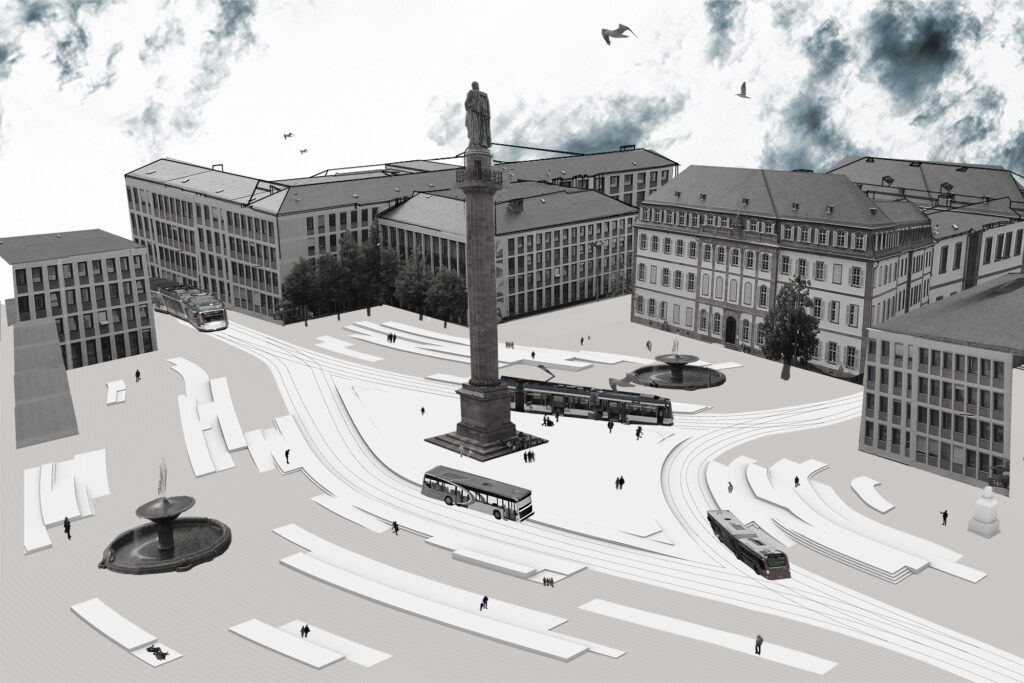
Luisenplatz in Darmstadt as a traffic junction and place to stay
Public squares create space for people, for movement and encounters. They are open to all and yet at the same time must formulate offers and structure processes. This becomes particularly clear when, in addition to the amenity quality, different mobility offers are bundled on the square. A particularly interesting example of this is the Luisenplatz in Darmstadt, which is not only the central urban square with a high symbolic significance, but also a central linking point for local public transport, but also for pedestrians and cyclists. In the 1990s, Luisenplatz was praised as an example of a public square in which the balance between traffic junction and place to stay was particularly successful. In a survey of students conducted by the Department of Architecture at the Technical University of Darmstadt in 2014, however, Luisenplatz was rated as the “most stressful place”.
In cooperation with Prof. Dr.-Ing. Martin Knöll and students of architecture from the TU Darmstadt (Urban Design and Planning Unit), designs were developed and tested in a virtual reality simulation set up in parallel. The aim of the seminar was to investigate how objects (e.g. buildings, benches, information pillars), information (written and pictorial signs such as line numbers, floor markings) and materialities (surfaces) together form a spatial structure that is strongly characterised by mobility, by moving trams and buses, by foot and bicycle traffic. This space is structured by the change in movement, by getting on, off and changing trams, by waiting and moving on. How can orientation be improved, information conveyed, but also the amenity quality improved and stress reduced with design means?
How does a designer deal with an urban space, in contrast to an architect? Where can both disciplines, design and architecture, benefit from each other?
Type of project • Student project
Supervisors • Prof. Dr. Kai Vöckler, Dipl.-Des. Julian Schwarze
Participants • Felix Adam, Lea Bernhard, Luis Ganßloser, Noa Haller, Nina Jäcker, Emma Kottwitz, Lukas Kunkel, Clarissa Kurtz, Antoine Ochs, Josephine Pavesi, Carola Schulz
Status • completed
Duration • 04/2022 – 09/2022
Cooperation • Prof. Dr.-Ing. Martin Knöll, Urban Design and Planning Unit, Technical University Darmstadt